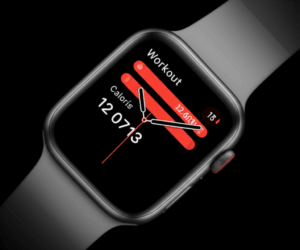For busy individuals struggling to maintain a fitness routine, Electrical Muscle Stimulation (EMS) training, particularly through programs like SpeedFit, offers a compelling solution. This method promises a full-body workout in just 20 minutes by using electrical impulses to stimulate muscle contractions, potentially saving significant time compared to traditional workouts. But is it really effective? This article dives into the science behind EMS training, explores the SpeedFit experience, and examines the potential benefits and considerations of incorporating this technology into your fitness journey.
What is EMS Training and How Does it Work?
Electrical Muscle Stimulation (EMS) training involves wearing a specialized suit or vest equipped with electrodes that deliver electrical impulses directly to your muscles. These impulses mimic the natural action potentials generated by the central nervous system, causing muscles to contract involuntarily. During a typical EMS session, a certified trainer adjusts the intensity and frequency of these electrical impulses based on your fitness level and goals. The suit is designed to target multiple muscle groups simultaneously, potentially leading to a more efficient workout.
Eladio de León, co-founder of Kensington EMS studio, E-Pulsive, explains that “EMS training works by delivering controlled electrical impulses through special EMS suits or electrodes placed on targeted muscle groups… These impulses stimulate deep muscle fibres that are often challenging to engage through traditional exercise alone. This results in more intense muscle contractions and a highly efficient workout.”
The SpeedFit Experience: Naked and Not Afraid
The experience of starting an EMS workout like SpeedFit can be a little unconventional. As one reviewer humorously noted, it can begin with “getting naked” to ensure the electrodes have direct contact with the skin for optimal effectiveness. Although the concept might seem “a little…confronting, at first…it does make sense,” because the suit tracks bio-data like heart rate and calories burned and the closer the electrodes are to your skin, the more effective they will be. Once you begin moving, the initial awkwardness tends to fade away.
During a SpeedFit session, a trainer guides you through minimal impact and weight-free exercises such as squats, lunges, crunches, and bicep curls. Throughout the 20-minute session, the trainer adjusts the intensity of the EMS waves, matching the pulses to the movements. The sensation is often described as a “tingly buzzing” or like being in a full-body massage chair, which tightens as the workout progresses. While not painful, it can feel a little odd at first.
Benefits of EMS Training: Time-Saving and Effective?
EMS training offers several potential benefits, particularly for those with busy schedules:
Efficiency: A 20-minute EMS session can provide benefits comparable to several hours of conventional resistance training. This efficiency stems from the technology’s ability to engage a higher percentage of muscle fibers compared to voluntary contractions during traditional workouts.
Muscle Strength and Endurance: EMS induces intense muscle contractions, potentially leading to improvements in muscle strength and endurance. Studies have shown that EMS training can increase muscle strength and power within a relatively short timeframe.
Core Activation: The electrical impulses used in EMS training can effectively engage deep core muscles, contributing to improved stability and posture.
Rehabilitation and Injury Prevention: EMS can be used in rehabilitation settings to maintain or regain muscle strength and function after injury. It can also help prevent muscle atrophy during periods of immobilization.
Weight Management: EMS training can support weight loss by boosting calorie burn and increasing muscle mass, which in turn raises your metabolic rate. A 20-minute session can burn up to 500 calories.
Improved Mood & Brain Health: EMS training can improve mood and boost brain health by relieving stress and releasing natural chemicals.
Considerations and Potential Side Effects
While EMS training offers numerous benefits, it’s essential to be aware of potential considerations and side effects:
Muscle Soreness: As with traditional workouts, EMS can result in muscle soreness, especially for beginners or if the intensity is too high.
Skin Irritation: The adhesive pads or electrodes used in EMS can sometimes cause skin irritation or redness.
Overstimulation: Using EMS too frequently or at too high of an intensity can lead to overstimulation of the muscles, potentially resulting in muscle fatigue or strain.
Underlying Health Risks: Individuals with certain medical conditions, especially those related to the heart or nervous system, should consult a healthcare professional before trying EMS training. EMS is typically not recommended for pregnant women or individuals with pacemakers, epilepsy, or severe heart ailments.
Electrolyte Imbalance: Muscle contractions induced by electrical impulses may increase fluid loss, potentially leading to electrolyte imbalances.
Potential for Muscle Imbalances: Relying solely on EMS technology can lead to muscle imbalances if not used correctly. It’s essential to ensure that all muscle groups are getting equal attention.
Cost: EMS training can be more expensive than traditional gym memberships or home workouts.
SpeedFit: Pricing and Trial Offers
SpeedFit offers trial packs and membership options. For instance, a trial offer might include two sessions for $59.95. Memberships include weekly or double visits per week, with options to purchase add-on booster packs. Pricing for packs (as opposed to memberships) varies, but an example is:
- 12 Sessions: $79.95 per session (3-month validity)
- 30 Sessions: $69.95 per session (9-month validity)
- 52 Sessions: $59.95 per session (12-month validity)
The Expert’s Take on EMS
While some studies suggest EMS training is “20 times more effective than traditional strength training”, with a significant improvement in body circumference and cardiovascular function, the consensus is not unanimous. Nicola A. Maffiuletti, Ph.D., head of Neuromuscular Research Laboratory, Schulthess Clinic in Zurich, states that electrical stimulation is “extremely difficult to dose properly”.
Jaclyn Fulop, M.S.P.T. adds to this by saying, “EMS can temporarily strengthen, tone, or firm muscles to some extent, but it likely will not cause long-term improvements in health and fitness alone, according to the Food and Drug Administration (FDA).”
Conclusion: Is EMS Training Right for You?
EMS training, particularly through programs like SpeedFit, can be a valuable tool for busy individuals seeking an efficient and effective workout. The 20-minute sessions, potential for muscle strengthening and toning, and core activation benefits make it an attractive option. However, it’s crucial to consider the potential side effects, consult with a healthcare professional if you have underlying health conditions, and ensure that sessions are supervised by certified trainers.
While EMS training may not be a magic bullet for fitness, it can be a beneficial addition to a well-rounded workout routine, especially when combined with a balanced diet and healthy lifestyle. As with any fitness program, individual results may vary, but the time-saving potential and unique muscle engagement offered by EMS make it worth exploring for those seeking to optimize their fitness journey.







